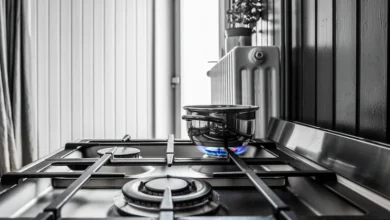How to Gather Crucial Evidence After a Pedestrian Accident

If you or a loved one has been involved in a pedestrian accident, one of the most important steps you can take (after seeking medical attention) is to gather and preserve evidence. This evidence can be the key to proving fault, securing fair compensation, and helping the best pedestrian accident lawyer near you build a strong case on your behalf.
Below is a guide on the types of evidence to collect and how to ensure nothing crucial gets overlooked.
1. Call 911 and Ensure a Police Report Is Filed
Immediately after an accident, always call the police—even if your injuries seem minor. The responding officer will file an official accident report, which will include details like:
- Time and location of the incident
- Statements from the driver, the pedestrian, and any witnesses
- Initial assessment of fault
- Weather or road conditions
- Any traffic citations issued
Request a copy of this report as soon as it becomes available. Insurance companies and attorneys rely heavily on these documents to begin building their case.
2. Take Photos and Videos of the Scene
If you’re physically able—or someone with you can help—take as many photos and videos of the scene as possible. The more detailed and time-stamped, the better. Capture:
- The vehicle involved, including its license plate and any damage
- Skid marks or debris on the road
- Traffic signs, signals, and crosswalks
- Weather and lighting conditions
- Visible injuries and torn clothing
- The exact location of the collision
This visual evidence can help reconstruct the accident and show how it unfolded. Over time, the scene changes—vehicles get moved, weather shifts, and evidence disappears—so documenting it immediately is critical.
3. Gather Witness Information
Eyewitnesses can offer unbiased accounts of what happened. Their statements may support your version of events and counter any claims the driver might make. Ask for:
- Full names
- Contact numbers
- Email addresses
- A brief statement, if they’re willing to provide one
Your attorney may follow up with them later for a more detailed account or testimony.
4. Preserve Medical Records and Treatment Details
Seeking medical care right after an accident isn’t just important for your health—it’s also crucial for your legal case. Medical records serve as a clear link between the accident and your injuries. Keep a file with:
- Hospital visit summaries
- X-rays, scans, and test results
- Doctor’s notes and diagnosis
- Prescription information
- Physical therapy or follow-up care
- Medical bills and receipts
Also, maintain a journal to record your symptoms, pain levels, and how the injury impacts your daily life. This personal account adds depth to the clinical records.
5. Collect Surveillance Footage (If Available)
Check the area where the accident occurred for any surveillance cameras. These might be on nearby businesses, traffic lights, or residential buildings. Video footage from these sources can provide undeniable proof of how the incident occurred. Since footage is often deleted within days, act quickly or ask your attorney to obtain the recordings.
6. Keep Track of Expenses and Lost Wages
Beyond medical bills, a pedestrian accident can lead to other significant financial burdens. Maintain records of:
- Time missed from work
- Transportation costs to and from medical appointments
- Assistance services (e.g., home care, childcare)
- Any home modifications required due to injury
All of this helps quantify the damages you’ve suffered, which is essential for your claim.
Conclusion
The moments and days following a pedestrian accident are critical. While you focus on healing, taking the time to gather the right evidence—or getting help to do so—can make a significant difference in the outcome of your case. From photos and witness statements to medical records and surveillance footage, every detail counts.
If you’re searching for a good pedestrian accident lawyer near you, make sure to choose someone with the experience and dedication to turn this evidence into a compelling case. The road to justice starts with being prepared, and the right legal support can guide you every step of the way.



